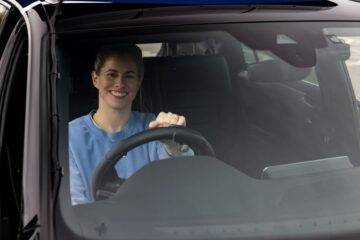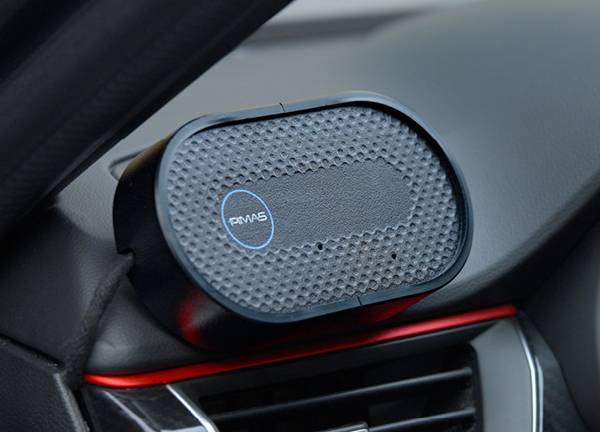Can You Drive With Cerebral Palsy?
The freedom and independence that driving provides can be life-changing. But many people wonder: can you drive with cerebral palsy? While cerebral palsy may bring unique challenges behind the wheel, the right guidance, adaptive equipment, and training can make driving both possible and empowering.
Driving With Cerebral Palsy: DVLA Rules and Safety Considerations
Understanding the rules for cerebral palsy driving is essential to ensure safety and compliance with the DVLA. The DVLA (or the DVA in Northern Ireland) must be informed about your condition by completing their medical notification form. You’ll also need to update them if your condition changes in a way that could affect your ability to drive.
While this might feel like an extra obstacle,, it’s important as failing to notify the DVLA can lead to a fine of up to £1,000, or even prosecution in serious cases.
Once you’ve told the DVLA or DVA, they will review your case and send you a decision letter. Sometimes, they may need a bit more information before making a decision. This could involve:
-
- Contacting your doctor or consultant for medical details
- Arranging a medical examination
- Asking you to take a driving assessment, eyesight test, or even a practical driving test
It’s natural to feel nervous about this process, but remember the purpose is to make sure you can drive safely and confidently. The DVLA handles these assessments every day, and you’ll be treated fairly and guided through the steps you need to take.
For those with a bus, coach or lorry driver licence, you must complete a different form here.
Do you have to tell your car insurance if you have cerebral palsy?
Even if you have a valid licence, insurers still require you to declare any medical condition they ask about that could affect driving. Not telling them could mean your insurance is invalid, and they might refuse to pay out after an accident.
Will this affect my insurance premium?
Having cerebral palsy doesn’t mean you’ll pay more or be refused insurance. Many people with cerebral palsy drive with adaptations and are fully insured. Insurers just need accurate information so they can assess risk properly.
We suggest speaking with your individual insurer to check their policy and guidelines.
The Impact of Cerebral Palsy and Driving
If you’re wondering, ‘can you drive with cerebral palsy?’ It’s important to understand how movement, coordination, and posture may affect driving. The severity and type of cerebral palsy vary greatly, meaning each person’s experience is unique.
When it comes to driving, these common symptoms can affect people in different ways:
- Movement and coordination challenges – Muscle stiffness, jerky movements, or reduced motor control may make it harder to operate standard pedals, steering wheels, or gear sticks with precision.
- Muscle spasms – Sudden or unpredictable muscle spasms can interrupt smooth driving control, requiring adaptations to improve safety and comfort.
- Fine motor skills – Tasks like turning a key in the ignition or operating secondary control functions like indicators and wipers can be more difficult for people with limited hand function.
- Balance and posture – If CP affects posture, sitting comfortably for long periods and maintaining a safe driving position may be challenging without supportive seating or adjustments.
- Fatigue – Driving often requires sustained concentration and physical control, and some people with CP may experience fatigue more quickly.
Supporting Your Journey to Safe Cerebral Palsy Driving

The Importance of Driving Assessments and Expert Advice
Following appropriate advice from DVLA and medical professionals, many people benefit from professional advice and a driving assessment to ensure safe cerebral palsy driving tailored to their needs. Accessing assessments through driving mobility specialists can help match the right adaptations to individual needs, making driving with cerebral palsy more comfortable and enjoyable.
Assessments examine a range of skills, from physical coordination to cognitive abilities, to evaluate whether you can safely operate a vehicle. They also provide recommendations for additional driving aids , if necessary, to support your mobility requirements.. Find your local centre though Driving Mobility for further details and to arrange yours. You can also check out our guide which details everything you can expect during your disability driving assessment.
Vehicle Adaptations for Increased Accessibility and Control
After completing a driving assessment, you can work with a vehicle adaptation specialist to find the right solutions that meet your specific needs. Adaptations are designed to make driving safer, more comfortable, and more accessible, whether you’re managing muscle stiffness, spasms, reduced coordination, or limited mobility.
Some of the most common driving aids and adaptations include:
Hand Controls – Transfer the function of the accelerator and brake from foot pedals to your hands, making driving more manageable if leg movement or control is affected.
Steering Aids and Secondary Controls – From steering balls to more advanced multi-function grips, these allow safe one-handed steering and can also bring the function of indicators, lights, wipers and horns into one device within easy reach.
Left Foot Accelerator – An option for drivers with limited use of their right leg, enabling acceleration and braking with the left foot.
Pedal Guards – These prevent accidental presses of the foot pedals for hand control drivers.
Vehicle adaptation specialists can also recommend solutions that make getting in and out of the car easier or support bringing mobility equipment along on your journeys. Such as:
Transfer Plates – Helpful if muscle stiffness makes it difficult to move in and out of a vehicle smoothly.
Wheelchair and Scooter Hoists – Boot hoists can lift and store your mobility aid in the boot at the touch of a button, reducing physical strain.
Powered Swivel Seat Systems – These seats can rotate, lower, or extend outside the vehicle to provide maximum independence and safety during transfers.
Whether you’re a driver or a passenger, these adaptations can be life-changing, removing barriers, reducing fatigue, and helping you enjoy the freedom of travel with greater confidence. By working with specialists, you can find a combination of aids tailored for ultimate comfort and control on the road.
Get in touch with our specialists
Our team are here to help you, simply get in touch if you have any questions or would like tailored advice.
The Value of Community and Connection
Seeking community and support from others living with cerebral palsy can be an invaluable part of navigating daily life. Connecting with people who share similar experiences helps reduce isolation while offering understanding, encouragement, and practical advice. These communities not only provide comfort but also create opportunities to share knowledge, celebrate progress, and build lasting friendships.
There are several organisations and charities that offer valuable resources and community connections:
- CP Sport – helping children and adults with cerebral palsy access inclusive sporting opportunities and community events to enhance physical and emotional wellbeing.
- Action Cerebral Palsy – educate parents, healthcare professionals, researchers and policy-makers.
- Scope – a national disability charity that provides support, helplines, and campaigns for equality and inclusion.
- UP The Adult Cerebral Palsy Movement – raising awareness of the options available, educating medical professionals, building communities to provide support and campaign for change.
Regain Your Independence on the Road
Safe and comfortable cerebral palsy driving is possible. If you’ve been asking, ‘can you drive with cerebral palsy?’ or ‘can people with cerebral palsy drive?’, our team can guide you with expert advice and vehicle adaptations.

